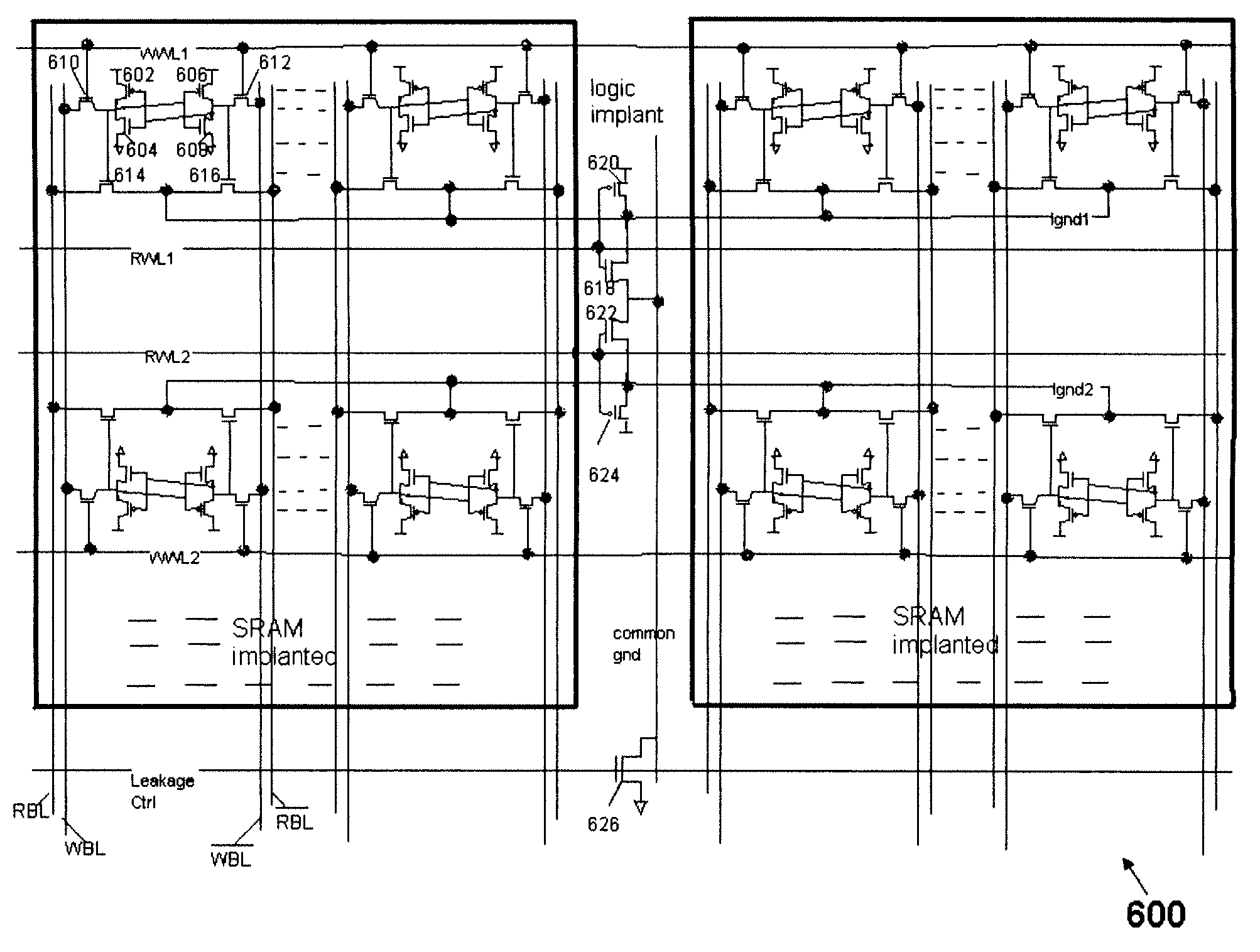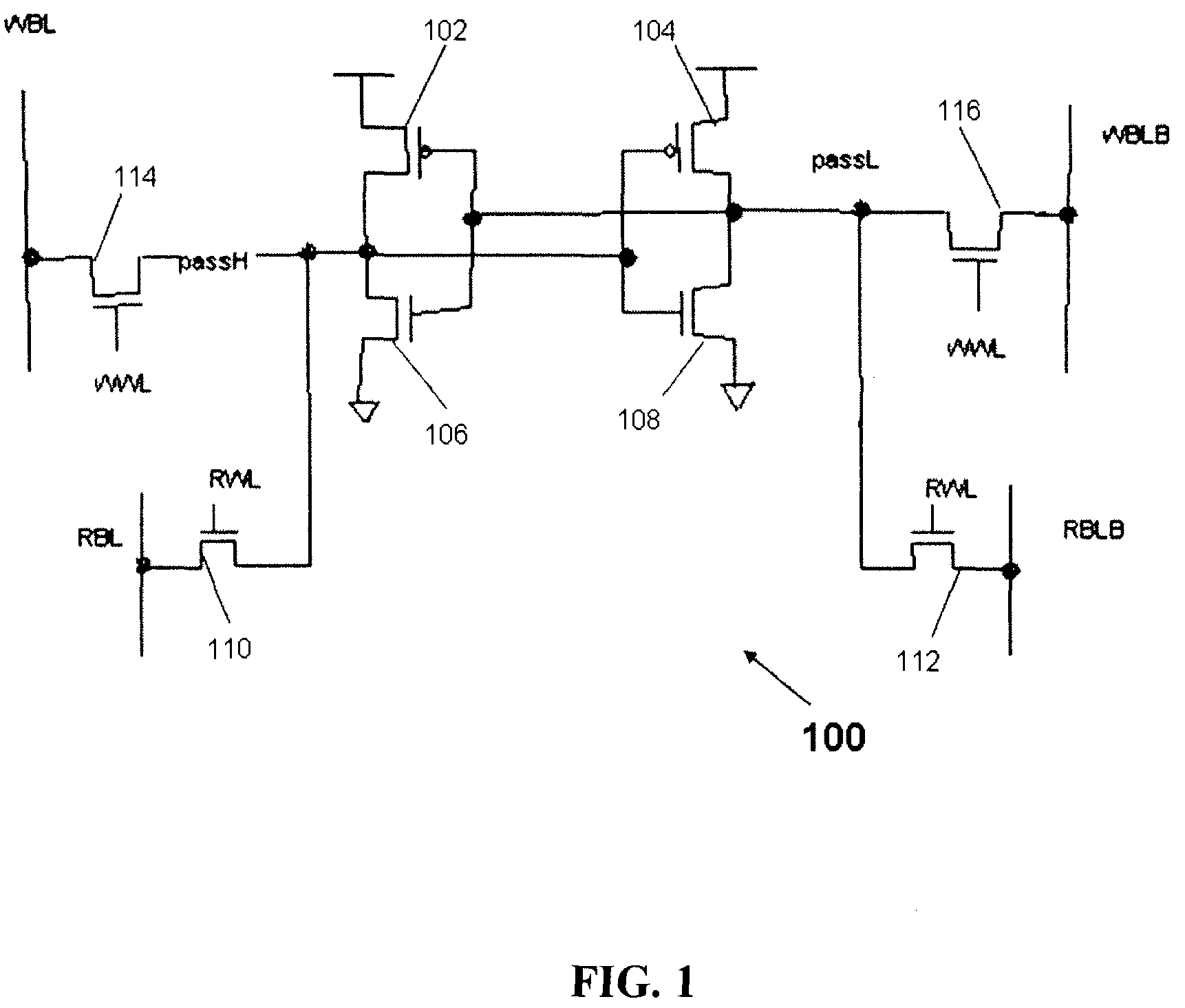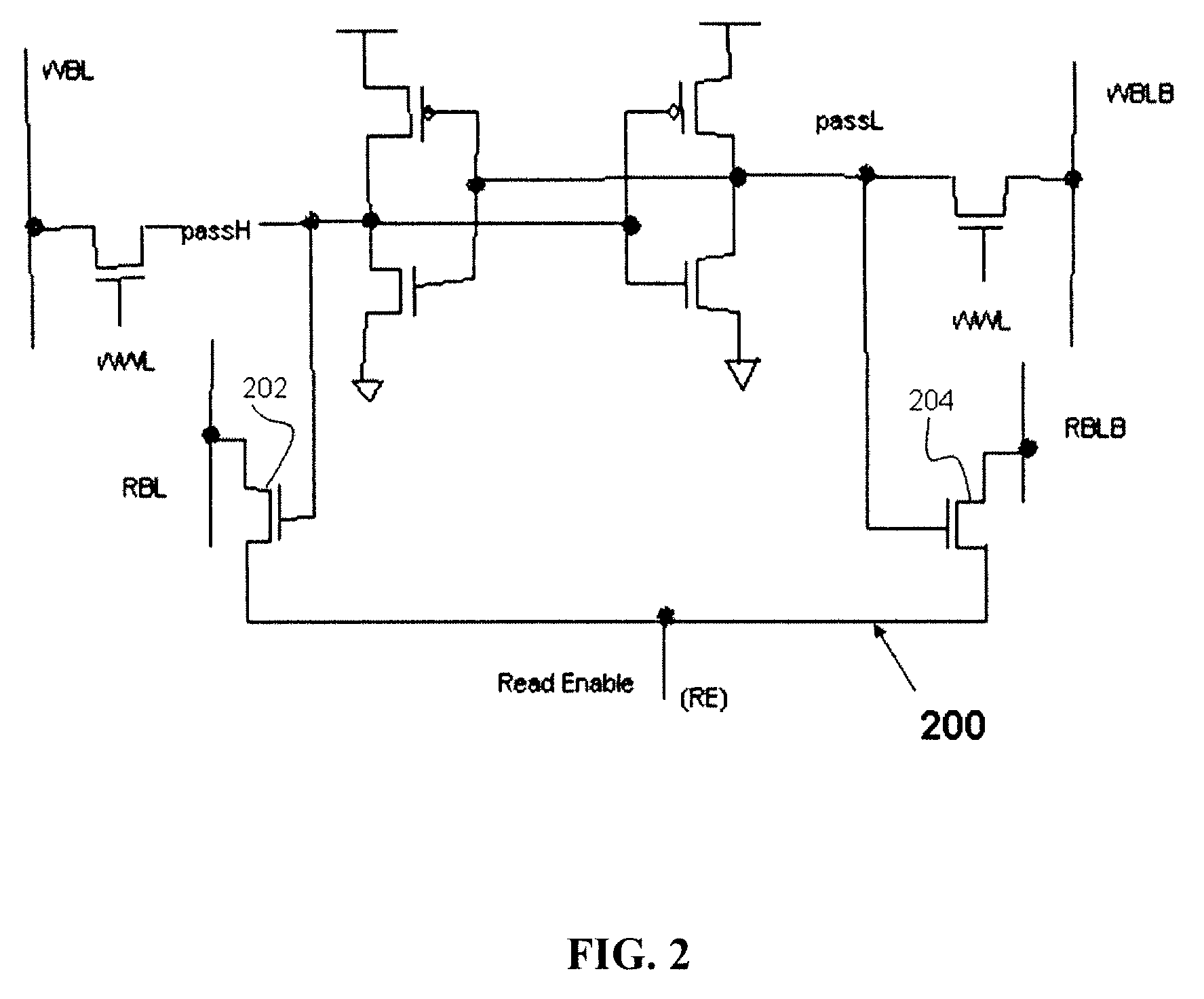Dual port SRAM with dedicated read and write ports for high speed read operation and low leakage
a read and write operation and dual-port technology, applied in the field of memory devices, can solve the problems of reducing the functionality of the dual-port sram cell, affecting the performance of the memory device, and defeating the very purpose of the dual-port sram, i.e., the ability to perform simultaneously read and write operations, etc., to achieve low static leakage, high-speed read operations, and easy cell fabrication
- Summary
- Abstract
- Description
- Claims
- Application Information
AI Technical Summary
Benefits of technology
Problems solved by technology
Method used
Image
Examples
Embodiment Construction
[0038]The preferred embodiments of the present invention will be described in detail with reference to the accompanying drawings. However, the present invention is not limited to the preferred embodiments. The present invention can be modified in various forms. The preferred embodiments of the present invention are only provided to explain more clearly the present invention to the ordinarily skilled in the art of the present invention. In the accompanying drawings, like reference numerals are used to indicate like components.
[0039]The present invention provides a SRAM architecture for high speed read operation with a dedicated read and write port with a minimal area. In the present invention, the dual port SRAM has an organized cell positioned in a plurality of rows and columns.
[0040]FIG. 6 illustrates an architecture for an SRAM array 600 according to the present invention. Dual port static random access memories (SRAM) having dedicated read and write ports. The SRAM array provides...
PUM
 Login to View More
Login to View More Abstract
Description
Claims
Application Information
 Login to View More
Login to View More - R&D
- Intellectual Property
- Life Sciences
- Materials
- Tech Scout
- Unparalleled Data Quality
- Higher Quality Content
- 60% Fewer Hallucinations
Browse by: Latest US Patents, China's latest patents, Technical Efficacy Thesaurus, Application Domain, Technology Topic, Popular Technical Reports.
© 2025 PatSnap. All rights reserved.Legal|Privacy policy|Modern Slavery Act Transparency Statement|Sitemap|About US| Contact US: help@patsnap.com



